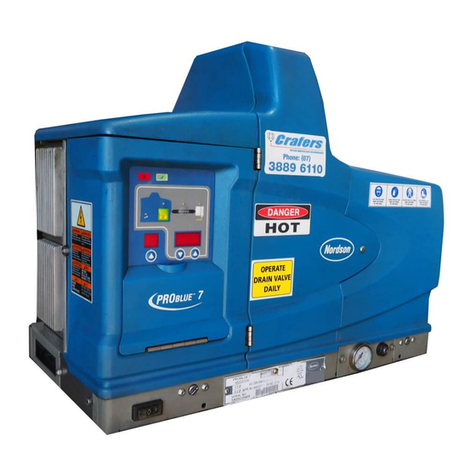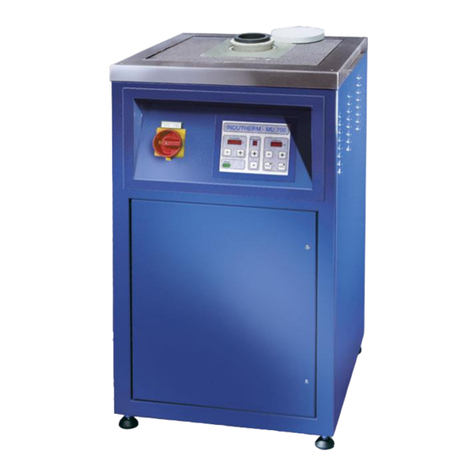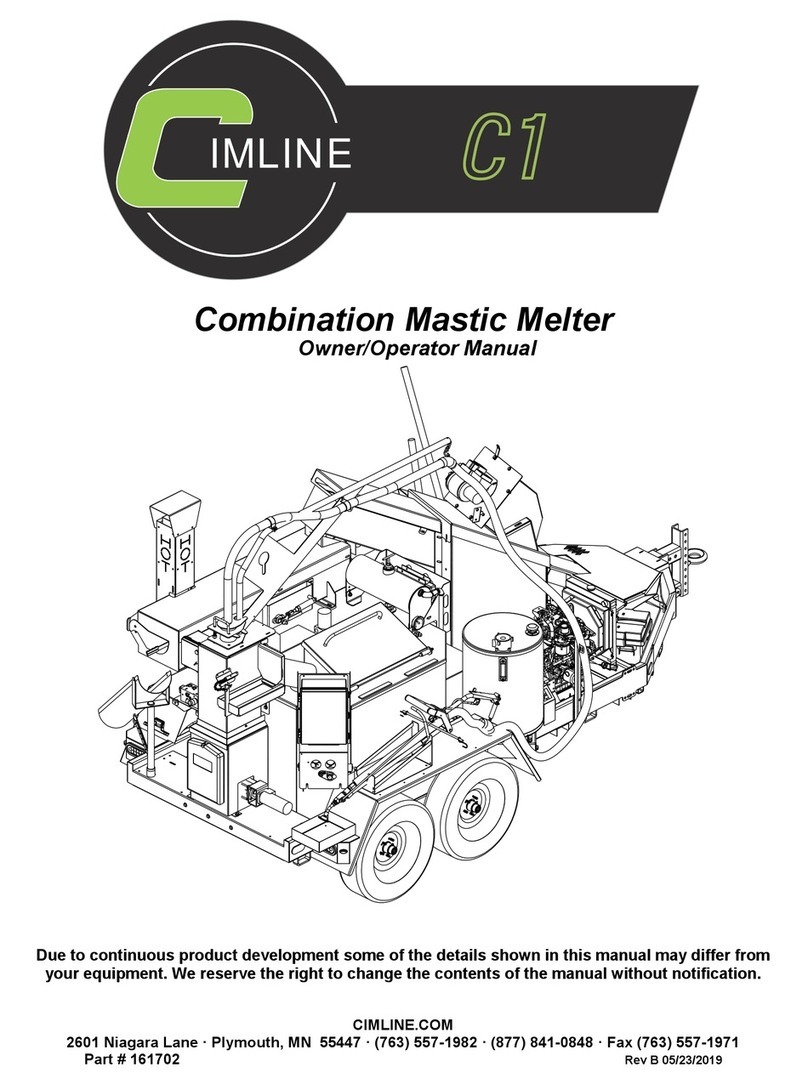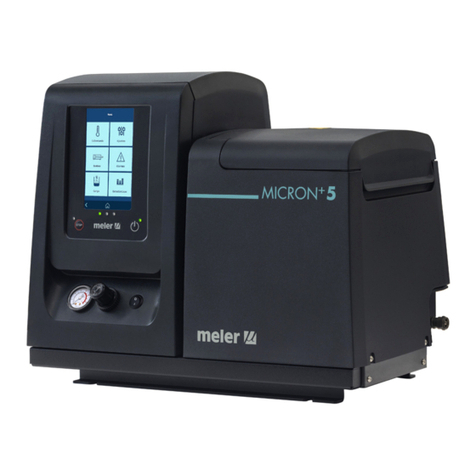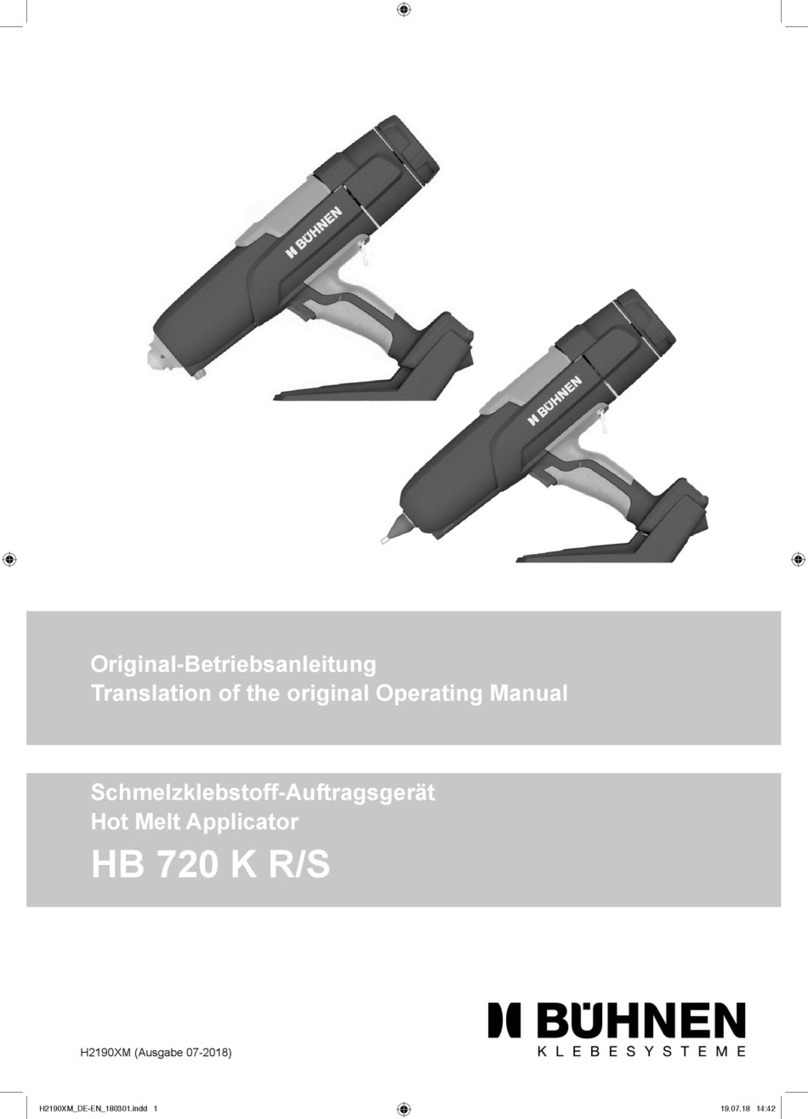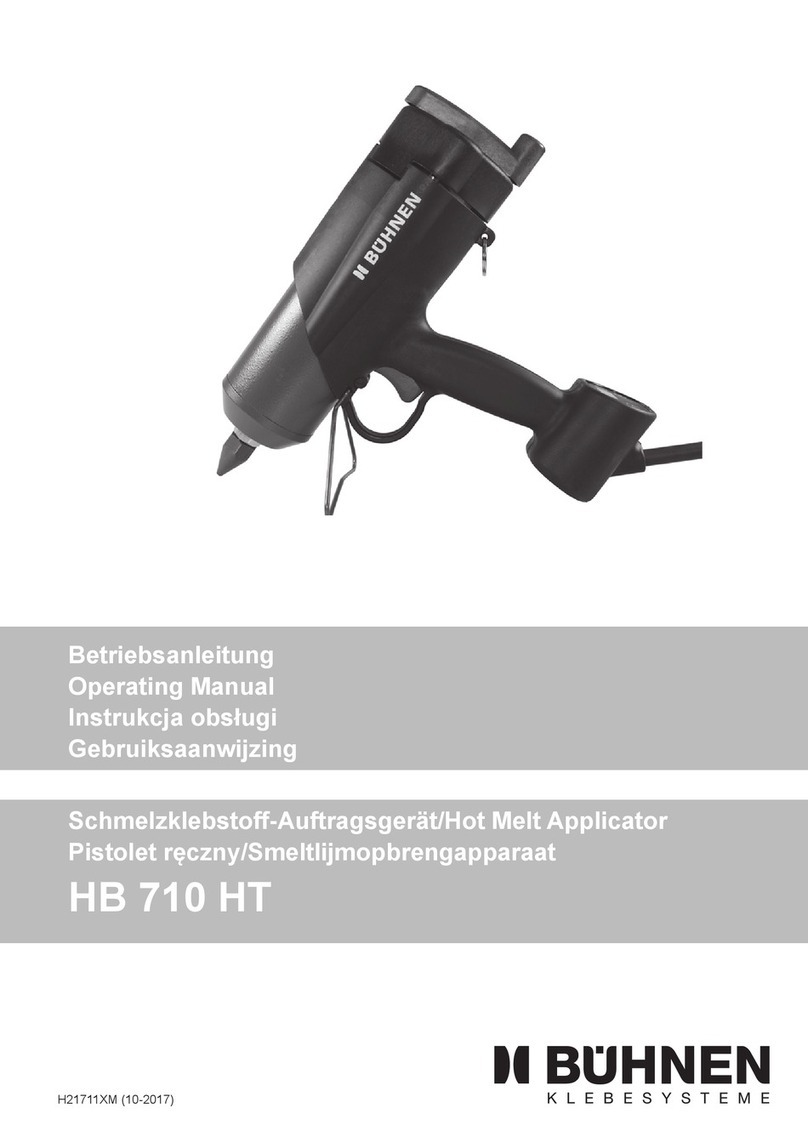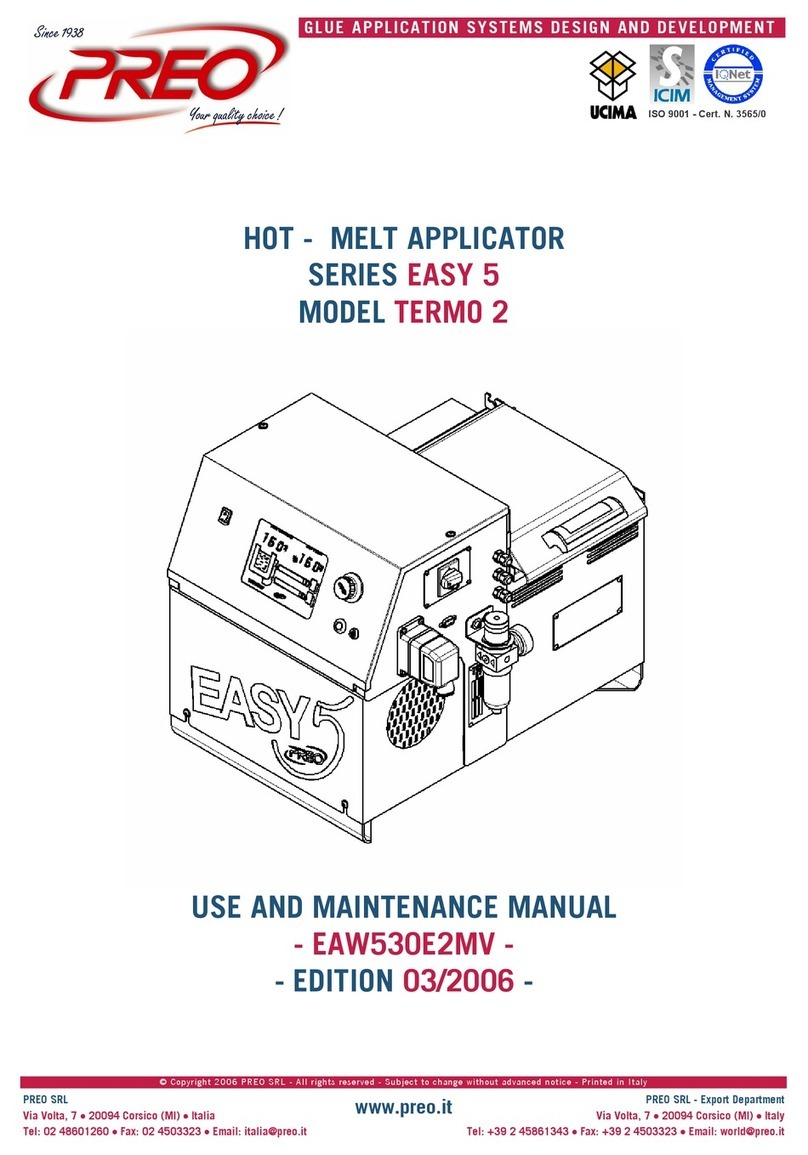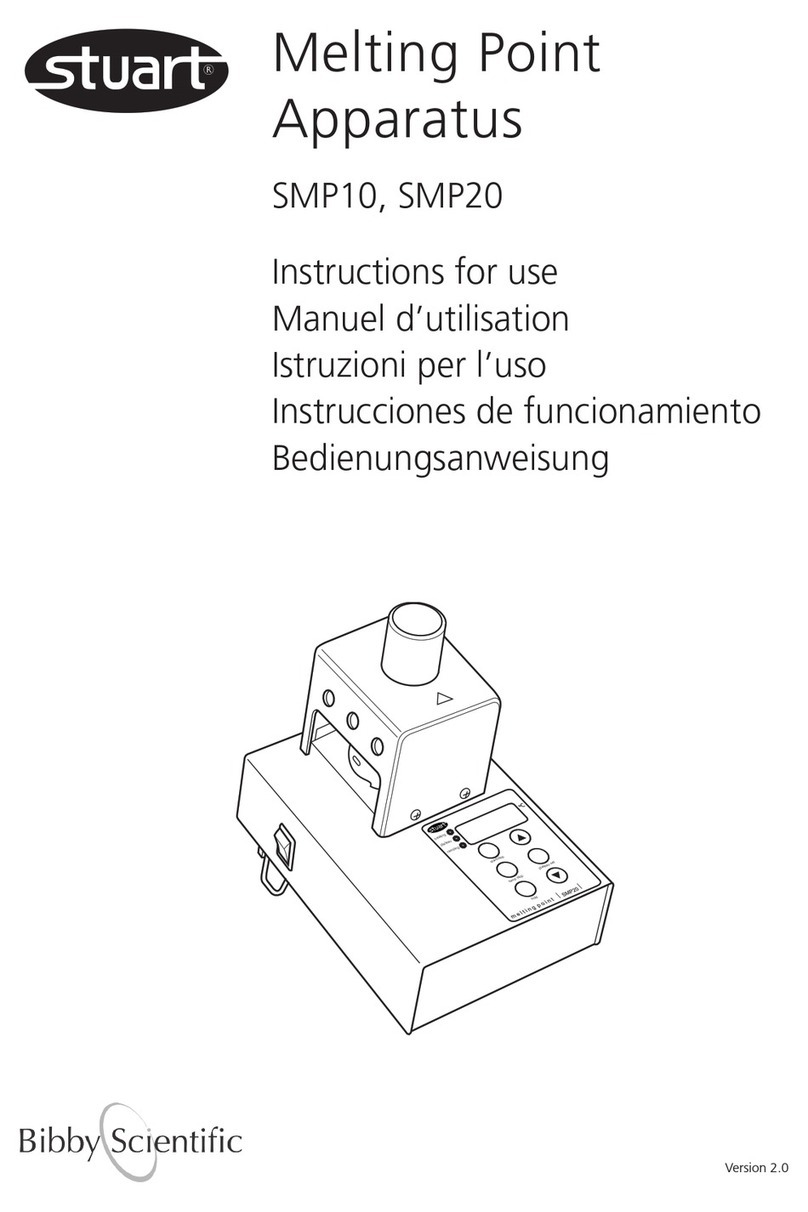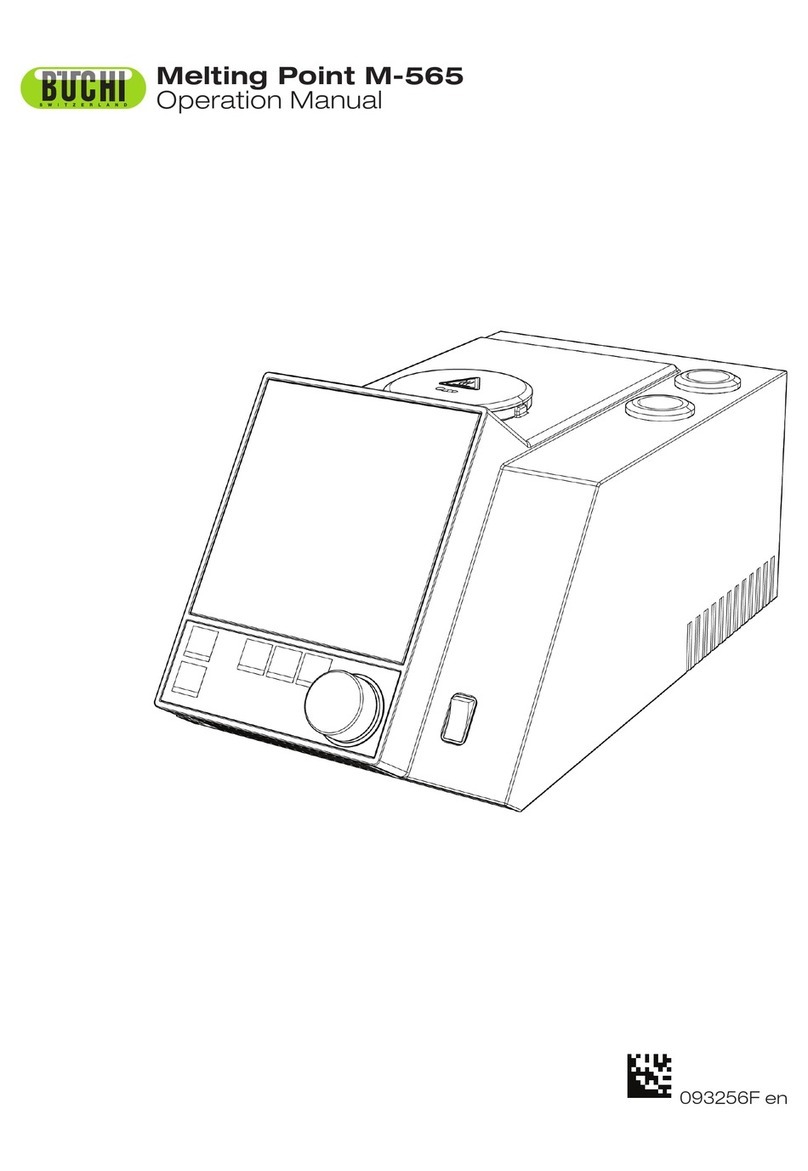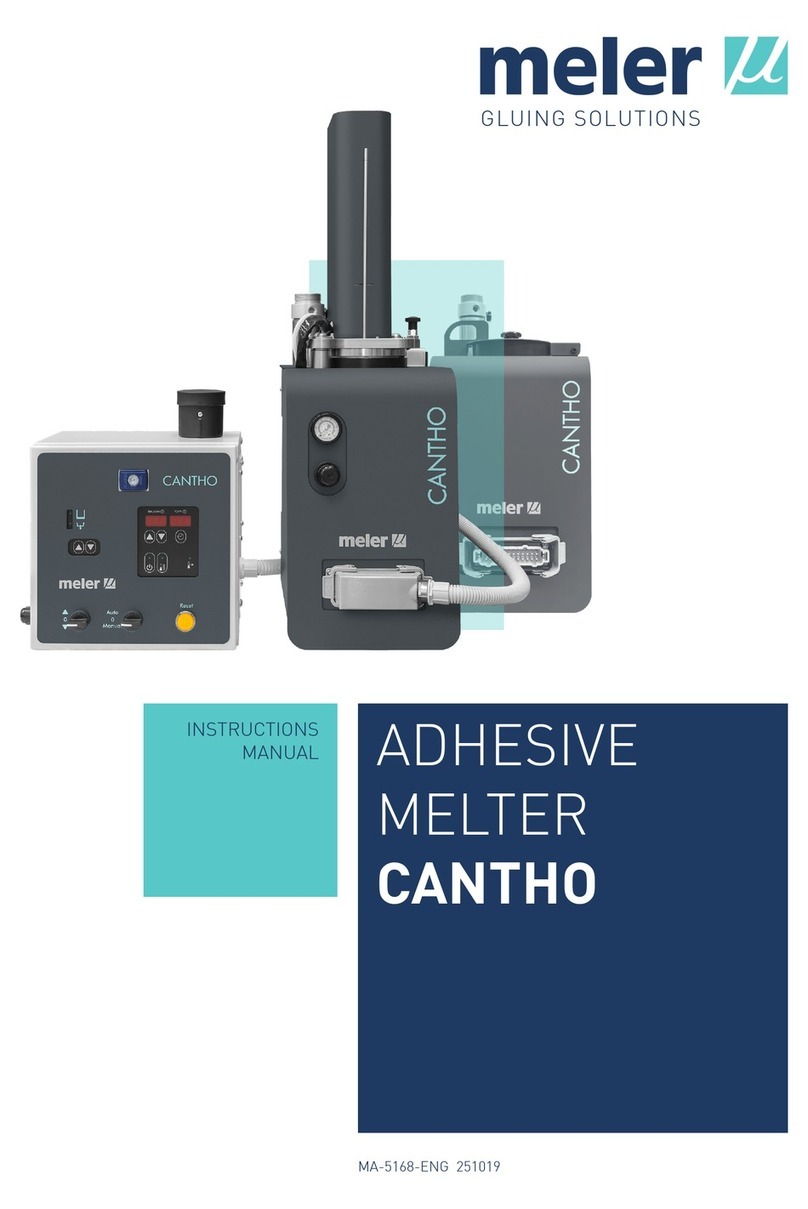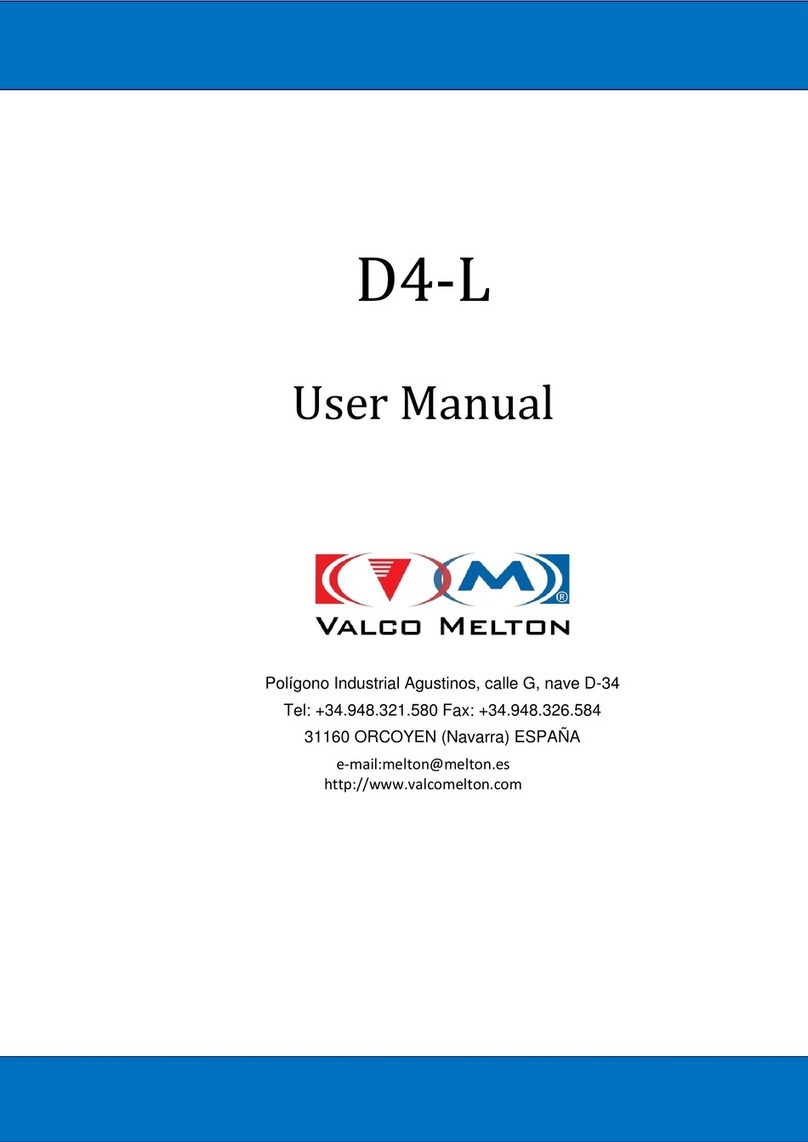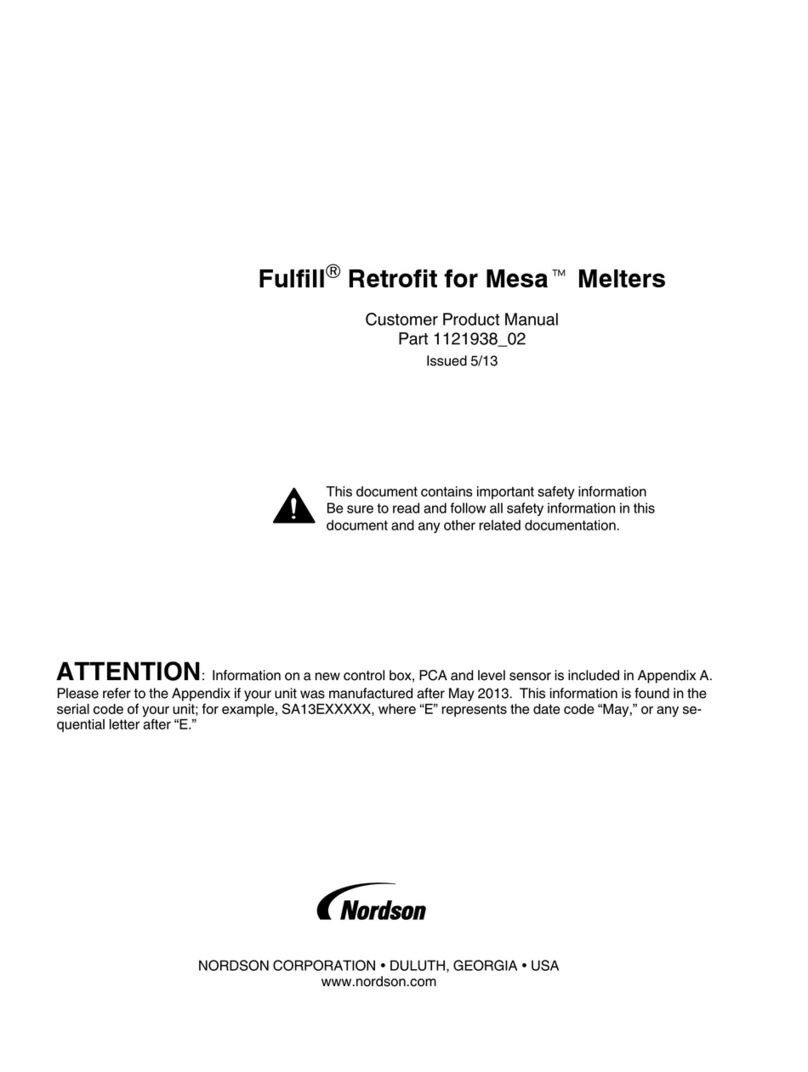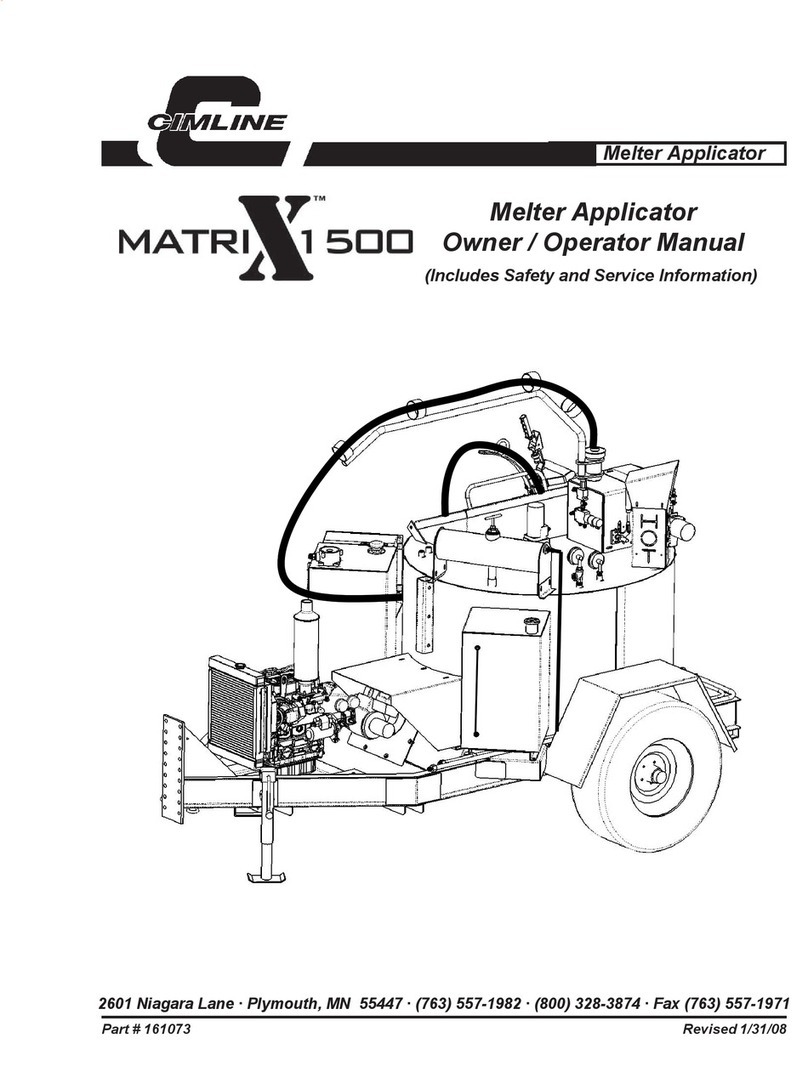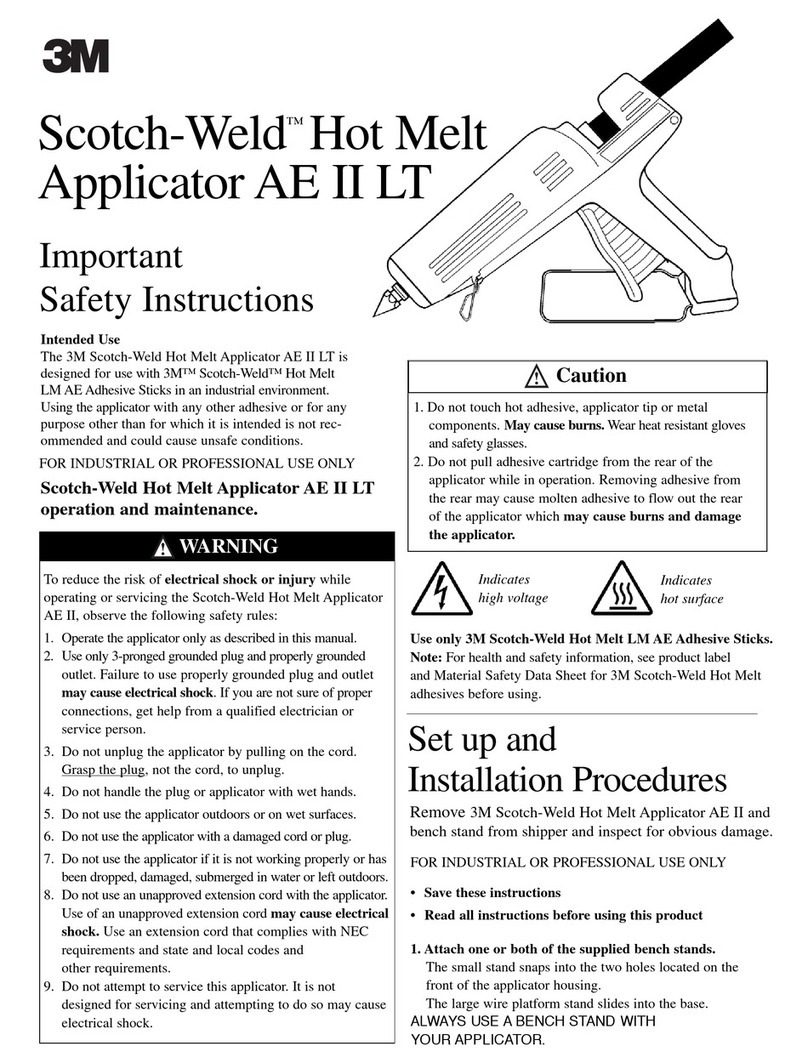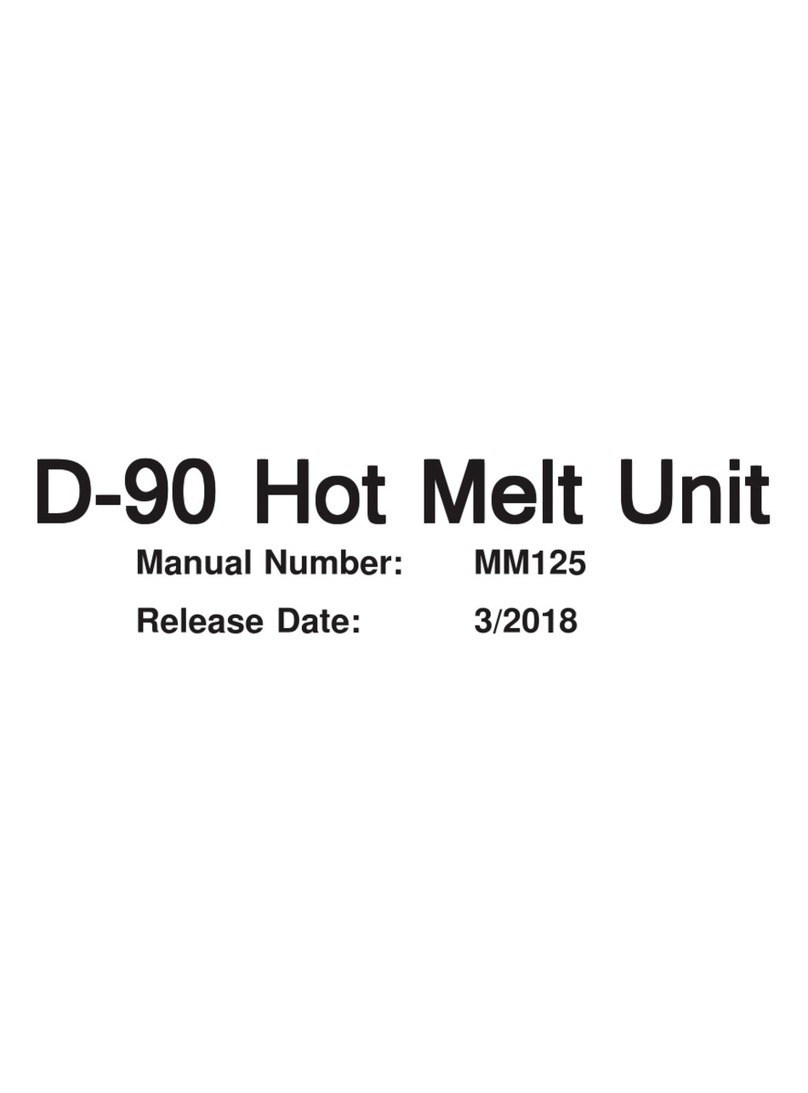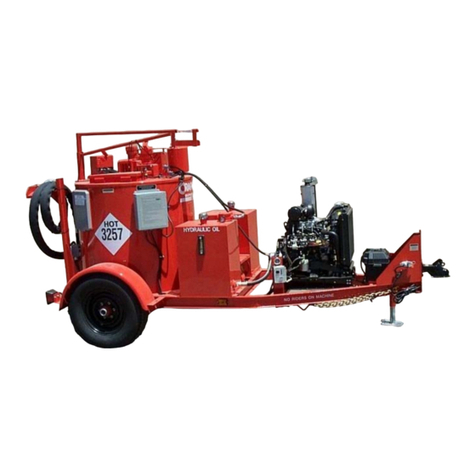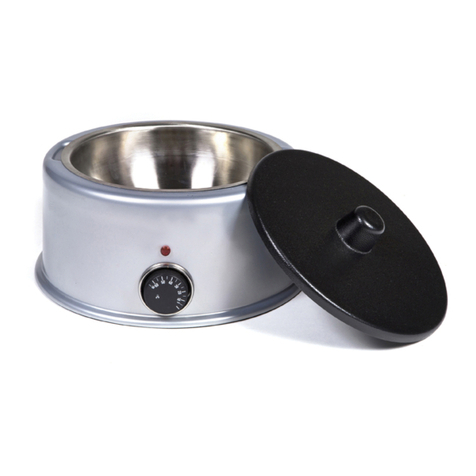
Preface “Working safely”
3
1 Preface “Working safely”
With the application system, the hot melt material is heated to high temperatures, con-
veyed to the application unit and discharged under pressure.
This security advice functions as industrial safety and accident prevention. Noncompliance
with the security advice can cause burns, injuries, or death by electricity and/or material
damage.
Your cooperation is required to protect you and other persons from harm:
• Always work cautiously.
• Always be aware that hazards are usually not obvious.
• Always use the requisite personal protective equipment for your safety at your work-
place.
2 General
The components of our application systems were designed and manufactured under con-
sideration of threat analysis and harmonized standards.
These components correspond to the status of technology and permit safe operation.
Danger!
Constructive changes may only be implemented after approval by the manufacturer.
2.1 Operator’s due diligence
The operation of the application system is only then safe when all requisite measures
have been made. It is the due diligence of the operator to initiate these measures and to
control its implementation.
Above all, the following must be guaranteed:
• that the application system is only used as intended,
• that the application system may only be operated in a faultless, functioning condition
and that the safety lugs are checked regularly,
• that the requisite personal protective equipment is available and is worn,
• that these operating instructions are always available in a legible and complete condi-
tion at the site of use,
• thatonlyqualiedandauthorizedpersonnel–seeChapter3–mayoperate,maintain,
and service the application system,
• that all safety and warning notices attached to the application system are not removed
and remain legible.

